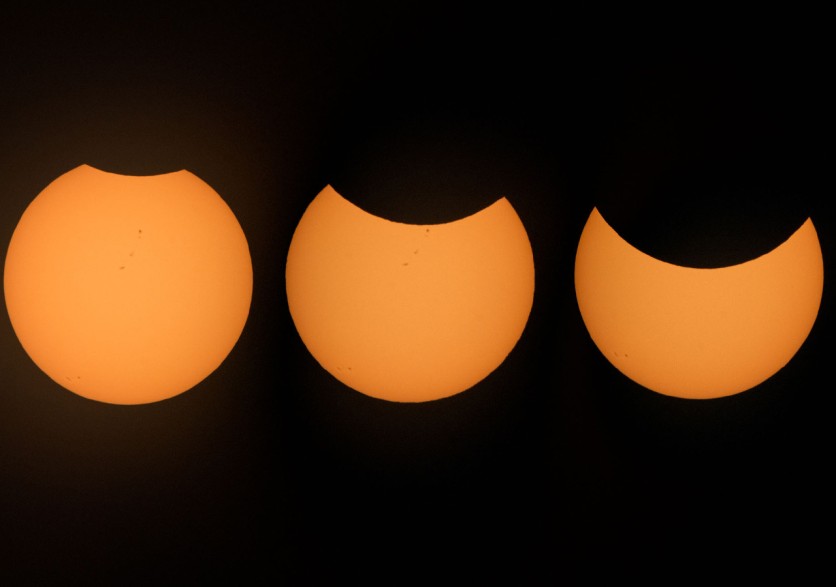Six days before Halloween, on Oct. 25, the moon will move in front of the sun, causing a partial solar eclipse. Depending on where observers are positioned across the world, the sun will appear to have a large bite eaten out of it, according to a report by Space.com.
Africa, Asia, Europe, and Guernsey in the United Kingdom will be able to see the partial eclipse, which will be nearest at the north pole and Russia.
However, observers from the United States will not be able to witness this partial solar eclipse on Oct. 25, according to Space.com.

When Can You Catch the Central Eclipse?
The point of the central eclipse, which will occur between around 5:00 a.m. and 9:00 a.m. EDT (0900-1300 GMT), will see the highest amount of the moon's shadow cover nearly 82% of the sun's disc.
It is worth noting that no location on Earth will experience a total solar eclipse during this event. This is because the moon will not be totally obscure the sun during the eclipse on October 25 as a result of an imperfect alignment between the moon and the sun.
Rather, it will appear as though a bite has been taken out of the sun, taking the shape of a crescent.
Eclipses occur when the moon moves in front of the Earth and the sun, casting a shadow on a portion of the planet and obscuring some or all of the sun's light.
Since the moon is significantly smaller than the Earth and casts a much narrower shadow, solar eclipses are never seen across the entire planet, as per Space.com.
The spot on Earth where an imaginary line linking the centers of the sun and the moon meets the surface of our planet is where any eclipse is at its most intense. From this location, observers can see the moon exactly centered in the middle of the sun.
The point of the central eclipse is carried along with the moon's shadow as it moves over the planet at a speed of between 1,000 and 5,000 miles per hour as it continues on its orbit.
The point of the central eclipse sweeps over Earth's surface from west to east as a total eclipse progresses. Space.com noted that this point does not cross the Earth's surface during a partial eclipse like the one that will occur at the end of October; instead, it either crosses the north or south poles.
This explains why the sun is not entirely covered since only a portion of the moon's shadow touches Earth.
On October 25, the center of the eclipse will pass directly over the north pole, blocking 82% of the sun. Up to 80% of the sun will be blocked out from Russia, and this percentage reduces to 70% in China, 63% in Norway, and 62% in Finland, as per Space.com.
Related Article : WATCH the Recent Solar Eclipse Captured by a Satellite, Shows an Intricate Process from GOES-16
This article is owned by Tech Times
Written by Joaquin Victor Tacla
ⓒ 2025 TECHTIMES.com All rights reserved. Do not reproduce without permission.




